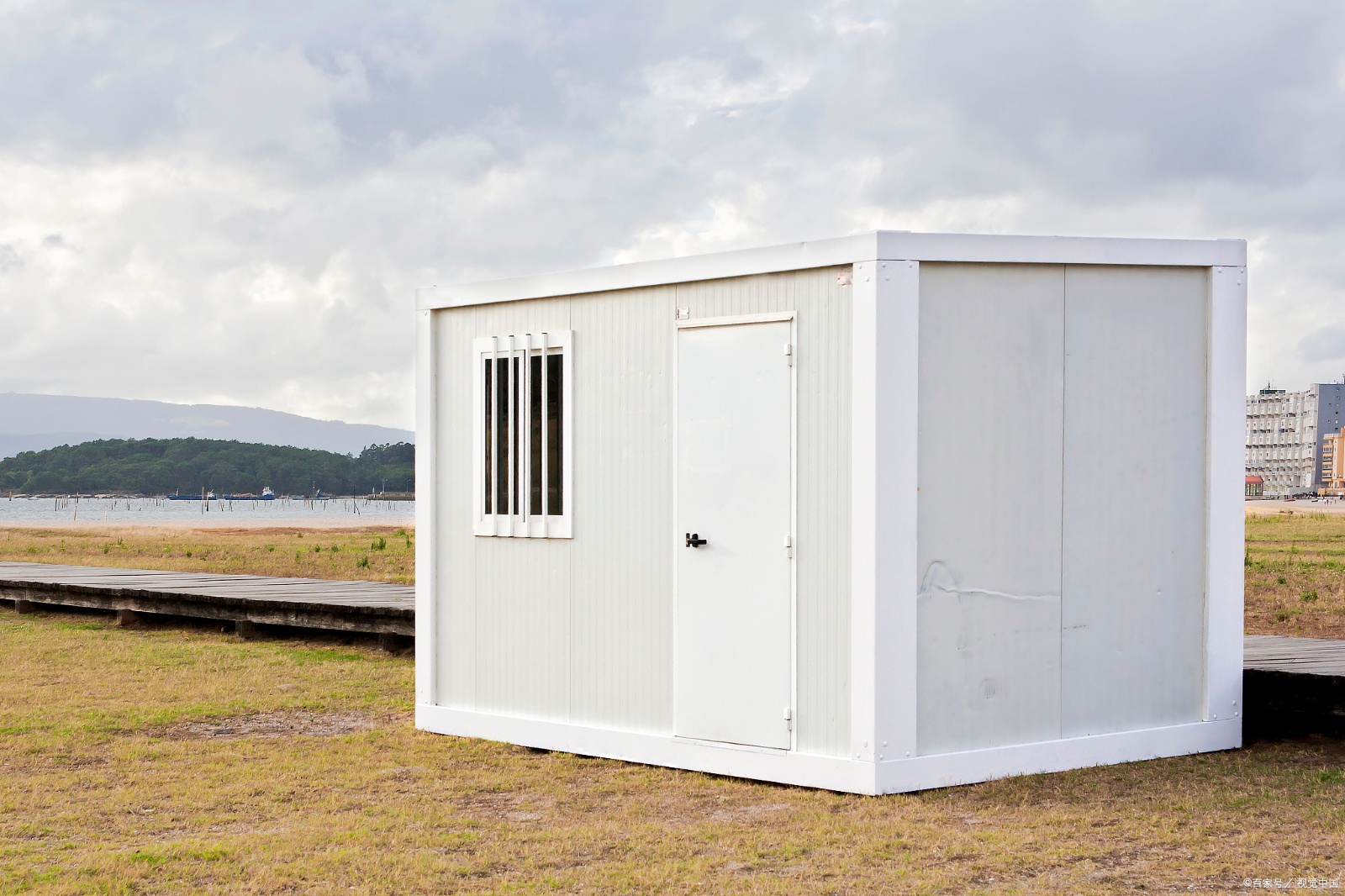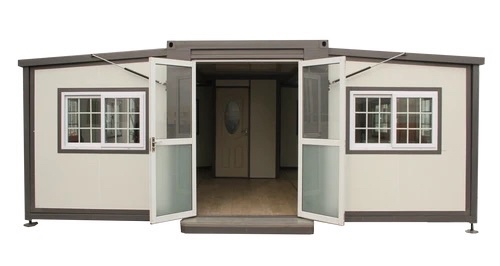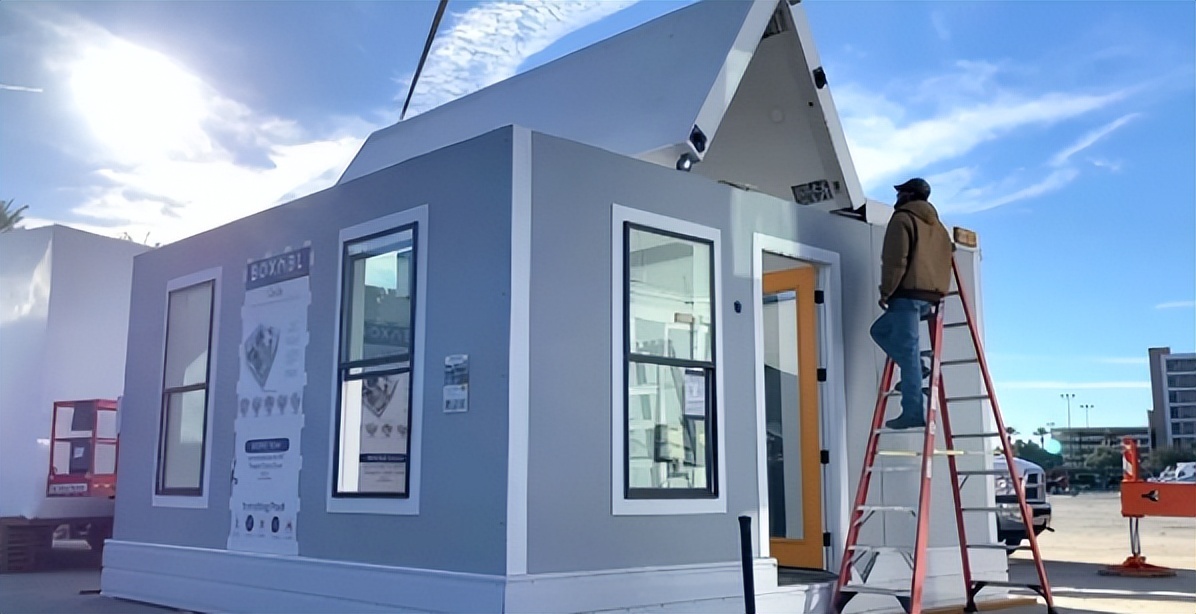
Collapsible Design
The foldable structure design of the quick-fit folding house allows the house to take up less space when transporting and storing. This design not only facilitates transport and storage, but also reduces transport and storage costs.
The collapsible design also allows the quick-fit folding house to be quickly installed and dismantled, improving construction efficiency. In emergencies such as emergency rescue, the quick-folding house can be built in a short period of time to provide a temporary living place for the people affected by the disaster.

Light Steel Structure
The quick-folding house usually adopts light steel structure as the main frame, which has the advantages of light weight, high strength and good anti-seismic performance, etc. The use of light steel structure enables the quick-folding house to be built in a short period of time. The use of lightweight steel structure makes it possible to build fast folding houses in different terrains and environments, with strong adaptability.
Light steel structure also has good fire performance and anti-corrosion performance, which can ensure the safety and durability of the house.
Thermal insulation materials
The walls and roofs of quick-folding houses are usually made of heat preservation and insulation materials, such as rock wool, glass wool, polystyrene and so on. These materials have good heat preservation and insulation properties, which can effectively block the heat and cold from outside and keep the indoor temperature stable.
Thermal insulation materials can also reduce the energy consumption of the house and improve the efficiency of energy use. In winter, thermal insulation materials can reduce the loss of indoor heat and lower heating costs; in summer, thermal insulation materials can block the entry of external heat and reduce the frequency of air conditioningStructural performance
Strength and stability: Through mechanical analyses and tests on the main frame of the quick-folding house, its strength and stability under different loads are studied. The results show that the light steel structure of the quick-folding house has high strength and stability, which can meet the requirements of temporary buildings.
Seismic performance: The simulated seismic test is carried out to study the seismic performance of the quick-folding house under the effect of earthquake. The results show that the light steel structure of the quick-folding house has good anti-seismic performance, which can effectively reduce the damage of the house by earthquake.

Wind resistance: The simulated wind tunnel test is carried out on the quick-folding house to study its wind resistance under different wind speeds. The results show that the light steel structure of the folding house has good wind resistance and can withstand certain wind force.
Heat preservation and insulation performance
Heat transfer coefficient: The heat transfer coefficient of the walls and roof of the foldable house is tested to study its heat preservation and insulation performance. The result shows that the heat preservation and insulation material of the foldable house has a low heat transfer coefficient, which can effectively block the heat and cold from outside and keep the indoor temperature stable.
Thermal inertness index: By testing the thermal inertness index of the wall and roof of the quick-folding room, the thermal stability of the quick-folding room is studied when the temperature changes. The results show that the thermal insulation material of the quick-folding room has high thermal inertness index, which can maintain the stability of indoor temperature when the temperature changes.
Waterproof performance
Leakage test: Leakage test is carried out on the quick-folding room to study its waterproof performance under different water pressures. The results show that the waterproof sealing materials used in the walls and roof of the prefabricated room have good waterproof performance and can effectively prevent rainwater leakage.
Water resistance: The waterproof sealing materials used in the walls and roofs of the prefabricated rooms were tested for water resistance, and their performance changes were investigated under long-term water immersion conditions. The results show that the waterproof sealing material has good water resistance and can maintain good waterproof performance under long-term water immersion conditions.
Environmental performance
Environmental protection of materials: The materials used in the quick-folding room are tested for their environmental protection performance and their impact on the environment is studied. The results show that the light steel structure, heat insulation materials, waterproof sealing materials and other materials used in the fast-folding room have good environmental performance and will not cause pollution to the environment.
Recyclability: The recyclability of the fast-folding house is analysed to study its recycling at the end of its service life. The results show that most of the materials of the quick-folding house can be recycled, which reduces the waste of resources and environmental pollution.
